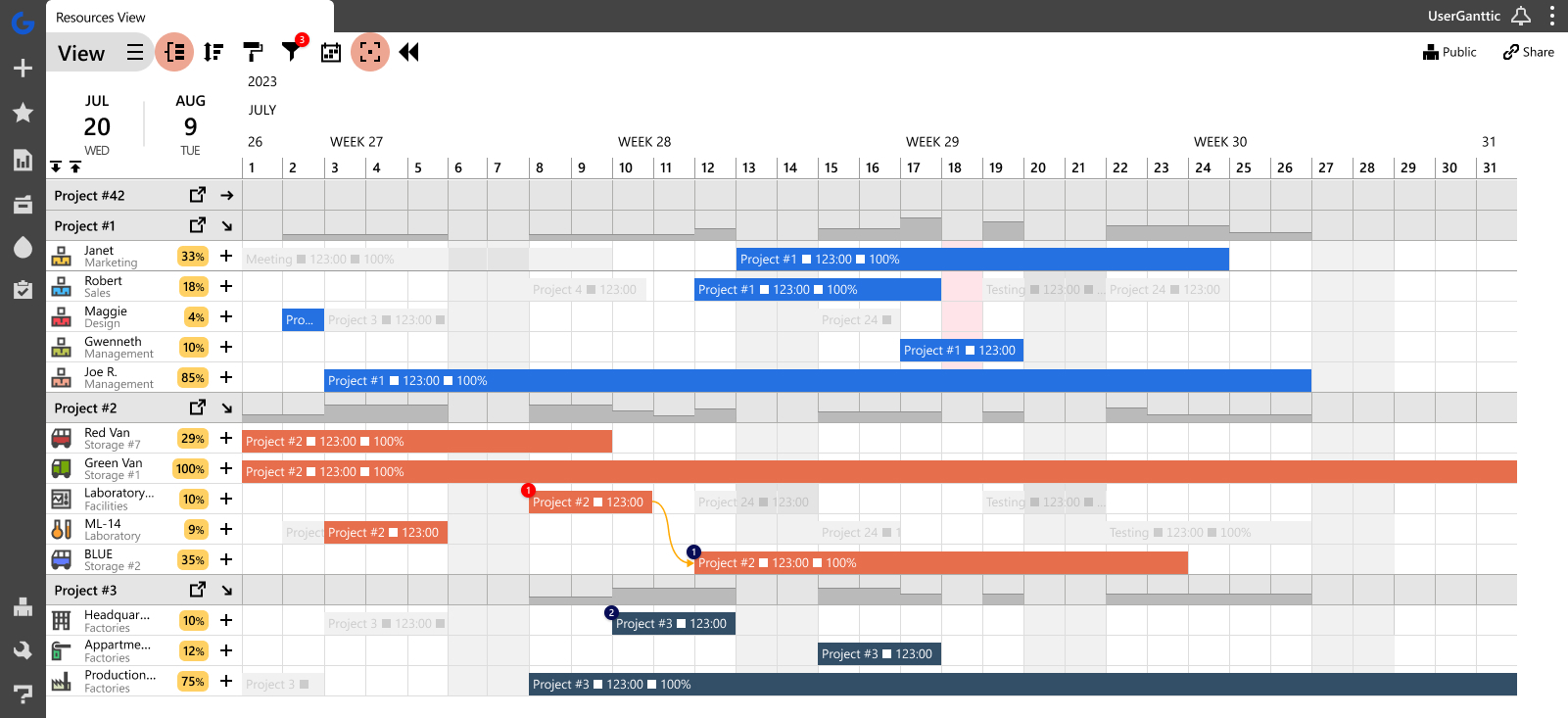Project portfolio management is all about balance. Since all projects compete for the same scarce resources, there’s always some give and take. While it’s imperative to prioritize resources and weigh task responsibilities against corporate objectives. In order to maximize the value of the portfolio, you link all our projects to the overall strategy, and balance the projects’ resources. Here we’ll give you a rundown of how to work out and implement a strategic alignment for all the projects in your portfolio.
What is Strategic Alignment in Project Management?
Strategic alignment refers to the process of ensuring that an organization’s portfolio of projects is closely aligned with its overall strategic objectives and goals. This involves making decisions and prioritizing project resources in a way that maximizes value and supports the organization’s strategic direction.
A big part of that balance occurs from how well each project is doing individually. Because successful projects in the portfolio equal a successful portfolio, right? Not necessarily.
Real World Example: When Projects Aren’t Aligned with the Portfolio
Let’s imagine that you are a project manager at a digital advertising agency.
You are used to planning resources for multiple projects that share the same resource pool. Meaning you always have a number of ongoing projects. While, your usual projects include creating and managing clients’ advertisements, suddenly upper management decides that you should take on a construction project.
You now have to use the same resource pool of copywriters, designers, creative directors, and MacBooks to build a playground. Since it’s totally new to all of you, it takes a lot of your energy. All your focus is on that one project. Your resources are starting to get burnt out.
Now I’m going to have to rain on your parade a bit. Let’s look at the same situation from project portfolio perspective. You are still the same project manager. You still use the same resource pool for multiple ongoing projects. There’s still that construction project you have to deal with. You still excel at it.
But.
The client you were doing a Facebook campaign for is a bit mad. Why? Since you had to find the perfect swing set for your playground, there was no time to come up with a campaign idea for them. The client you were supposed to build a website for has found a different agency to work with since your front-end developer was busy being a landscape architect. The client you had to help with their Google Adwords campaign has had enough time to learn it themselves, since your specialist was trying to find the perfect sand for the sandbox.
Yes, you can manage a single project perfectly. However, if that single project isn’t in line with the rest of your portfolio, it doesn’t matter or it can even make things worse.
Achieving Strategic Alignment for Projects
There are still times when single-project success doesn’t mean a thing to portfolio level success. And other time when it can even hurt the latter. It’s often caused by the fact that the projects in the portfolio are not prioritized, in line with the portfolio or there isn’t enough valid information for the project portfolio manager to make the right decisions for the portfolio.
So here’s a few ways in which you can start developing a strategic alignment for your projects within the portfolio.
Strategic Prioritization in PPM
All of us know it. When managing a project portfolio, you have to prioritize the projects. Since you almost always have limited resources to work with, a priority list will help you make decisions. However, somehow it still seems that all the projects that have been added to the portfolio are the top priority. Now, that sounds pretty good, huh? All the project managers are managing projects that are a top priority. We are all top dogs. All of us deserve all the resources we need. That’s where all goes downhill.
It’s a mentality you are going to have to get over. Since projects have to be prioritized. All of the concerned parties must be aware of those priorities. Those priorities have to come from the general goals and strategy outlined by your organization.
A thing to remember while prioritizing your portfolio is that direct financial return shouldn’t be the only thing you measure your projects against. Consider everything from strategic alignment to risk factors. Build a scoring method that works for the projects that you are dealing with. The priorities and goals should be clear for this step since everything else depends on it. You can use visual modeling tools to better understand where your projects stand. A bubble chart can be a great option for that. If an organized list does the trick for you, go with that.

Share Resources, Don’t Steal Them
I’m going to take a wild guess here and assume that you have been a victim of resource stealing at one point during your project portfolio management career. You have made a perfect resource schedule using Gantt charts. After you log out and check later in the day, what do you discover? One or more of your resources has been reallocated to another project.
If all projects are equal, all resources are up for grabs. A project that actually is a low priority can be keeping your resources tied up. If that happens, the high priority projects will suffer. And at the end of the day, even if the low priority project is successful, your portfolio won’t be.
Well, in Ganttic you can put a padlock on your projects. That way only the assigned users and administrators can make changes to your projects and the tasks attached to it. And of course, you can check the history to see who the thief was.
That way, when a manager logs in to the resource management tool and sees that a resource that was part of their project, is now reallocated to another project, there isn’t any questions why that was done. Actually, there will be questions. It’s just going to be easier to solve them.
Keep Communication Flowing
A study found inadequate information management to be one of the six problem areas that multi-project environments have to deal with. Since project portfolio management is all about continuously monitoring the portfolio status in terms of strategic alignment and capacity utilization, you need information to make decisions. You can’t balance something if you don’t know what’s causing the imbalance.
However, often there isn’t a good flow of information from project managers to the other parts of the organization and vice versa. Which indicates that communication plans are being overlooked by many project managers. A good communication plan states who, when, on what, and how should be informed. It does require quite a bit of extra effort but that effort isn’t actually extra. A communication plan puts a lot of uncertainty to the side and oftentimes transforms communication flow that used to be a shallow stream to a wide river.
Another thing that was found is that it’s common for organizations not to have a shared database which makes it hard to link projects and identify overlaps. Although, both are vital for multi-project environments since that’s where resource conflicts are born. The lack of a common database also indicates that the projects aren’t prioritized or in line with the portfolio.

Implementing project portfolio management software that would allow you to see the utilization of each resource across all of the projects as well as each project separately can be a fix since that way each manager would see how the resources are divided and could communicate their needs better. And portfolio managers would get the information they need to keep the project portfolio in balance and succeeding.